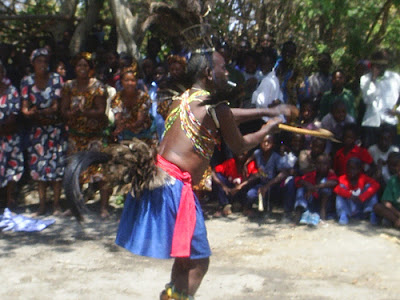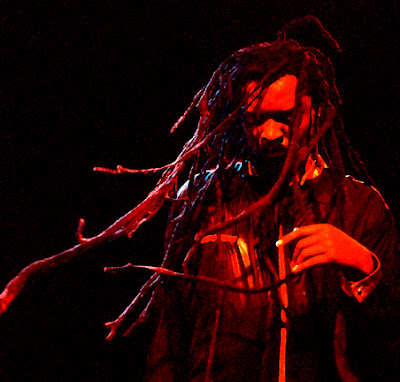Photo by Baroste Land

 The Lozi kingdom - known as Barotseland - was a protectorate under British colonial rule and became part of Zambia at the country's independence in 1964.
The Lozi kingdom - known as Barotseland - was a protectorate under British colonial rule and became part of Zambia at the country's independence in 1964.Photos by Baroste Land
It is said that in olden days the Kuomboka took place in the context of crisis as gardens and grazing were inundated and when the mounds on which so many of the inhabitants of Bulozi lived, became host to millions of rats, snakes and the fearless white ants that could consume the very buildings that people constructed to live in. Even the snakes could not handle the ants and would hang in bushes to try to escape the attentions of the ants! The concept of Kuomboka was invented by the early Lozis as an answer to this annual problem. Not just people but cattle too had to be swum to the plain margins to graze on the harsh woodland.
BACKGROUND ON THE LOZI
The history of the Barotse Kingdom is reported to have began with the southward movement of the Luyi people sometime around 1600. Luyi history is characterized by a series of expansionary conquests and the absorption of numerous other peoples under their rule. Luyi domination was temporarily interrupted when they were conquered by the Kololo, a group of invaders from the south, who ruled the kingdom from 1838 to 1864. In 1864 one of the Luyi (now known as Lozi) princes reestablished his group's dominance by conquering the Kololo. By then, however, British and Portuguese interests had begun to penetrate the area. The first treaties between the British and the Lozi, signed in 1890 and 1900, placed the Lozi under the authority of the British South Africa Company, but allowed them considerable autonomy in self-government. During the twentieth century, there were a series of changes in the larger political institutions to which the Lozi were subordinate. From 1924 to the 1950s, they were a part of Northern Rhodesia, under the rule of the British Colonial Office. Subsequently, they were incorporated into the Federation of Rhodesia and Nyasaland, and in 1964 Barotse Province became part of the newly proclaimed Republic of Zambia. Each of these political developments brought changes to the sociopolitical organization of the Lozi; the indigenous political organization increasingly lost power and functions, and the territorial extent of Lozi domination was constricted.
The Lozi are also known as skilled iron workers. Blacksmiths smelt the iron ore obtained from stream and river beds and from swamp soils to produce axe, hoe, and mattock heads, snuff spoons, crocodile hooks, knife blades, dagger blades, iron ankle-rings, hammers, and other items.

KINSHIP
The Lozi possess no unilinear kin groups. Despite a slight patrilineal bias, kinship is reckoned bilaterally, with relations traced as widely as possible through both consanguineal and affinal ties. They have eight noncorporate name groups called mishiku (sing. mushiku), and a man can claim membership in any or all of them, provided that he is a direct descendant in any line of a person who was a member.
TRADITIONAL HEALING Diviners usually dance to work themselves into a frenzy and into a state of spirit possession to cure their patients. According to the Lozi, almost all disease is caused by sorcery. To combat these diseases, a witch doctor (naka) is called in to perform rites of exorcism over the patient. The naka, who possesses real if limited medical knowledge, may be a member of the local community or may be invited from a neighboring village or from an outside tribe. The diseases treated by exorcism are psychic disorders that are usually attributed to possession by a malevolent spirit. These disorders are called maimbwe, liyala, macoba, and kayongo. The method of curing involves exorcistic dancing combined with the inhalation of the vapor from boiling concoctions of bark, roots, and leaves. There are also a number of less common curing ceremonies, such as the one performed when a child becomes possessed by a hunter ancestor.
DEATH AND AFTERLIFE
At the point of death, the individuals eyes and mouth are kept open. The body is flexed so that the knees come up under the chin. The body is then removed from the hut through a special opening cut in the side of the dwelling for this purpose. As the body is taken to the cemetery for burial, spells are scattered on the road to prevent the return of the ghost to haunt the village. Men dig the grave while women stand around the grave site and check to see if the grave is deep enough. Men are buried facing east, whereas women face the west. When the grave is ready, two relatives of the deceased climb into the grave to receive the body. The personal possessions of the deceased are then placed around the corpse. Relatives kneeling around the open grave then gently push dirt into the hole, while those within place dirt around the body. The grave is then completely filled. On top of the grave are placed a broken anthill and a wooden plate or some other object that has been broken with an axe stroke (dead like its owner), in the belief that they will accompany the individual to the other world. The grave of a person of status, which is situated to the side of the commoner s cemetery, is surrounded by a circular barrier of grass and branches. After returning to the village the people mourn for several days. As a sign of grief, the kin of the deceased wear their skin cloaks inside out. The hut of the deceased is pulled down, the roof being placed near the grave, while the remaining possessions of the dead person are burned so that nothing will attract the ghost back to the village. Sons and brothers of the deceased build miniature shelters in their courtyards, bearing the name of the dead, in which the spirit may come and find protection. At times of sickness or disaster, the kin of the deceased go to these shelters to worship and seek the spirit's aid.
The funeral rites for a king are far more elaborate. Before his death, each king selects or builds a village in which he will be buried, peopling it with councilors, priests, and other personnel. At his death, the king is buried in a huge grave at this site. This is then surrounded by a fence of pointed stakes and the markings of royalty erected around the location. Trees, obtained from the bush, are planted at the royal grave so that from a distance the site stands out distinctly on the flat plain. The Lozi believe that these royal graves are infused with great supernatural power, affecting the lives not only of the royal heirs but of all the inhabitants of Loziland. Each grave has its resident priest, who makes offerings at the site. The royal ancestors are believed to act as intermediaries between Nyambe (the supreme god) and man.
At death, the spirit of the deceased goes to a "halfway house" on the way to the spirit world. Here the deceased, if a man who has the appropriate tribal marks (matumbekela) on his arms and holes in his ears, is received by Nyambe, or if a woman, by Nasilele (Nyambe's wife), and then placed on the road to the spirit world proper. If matumbekela and holes through the ears were lacking, the man was given flies for food and not welcomed; he was put on a road that meandered and became narrower and narrower until it ended in a desert where the man would die of hunger and thirst.
Zambia Ministry of Tourism
Eye on Culture
Barotse Land



